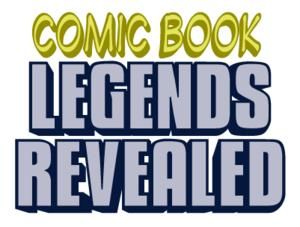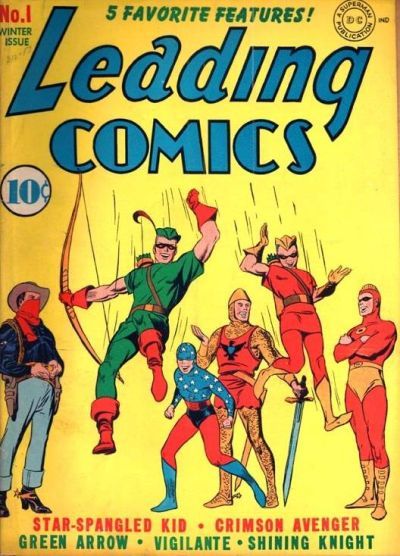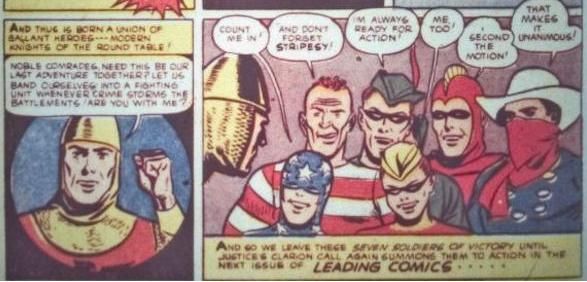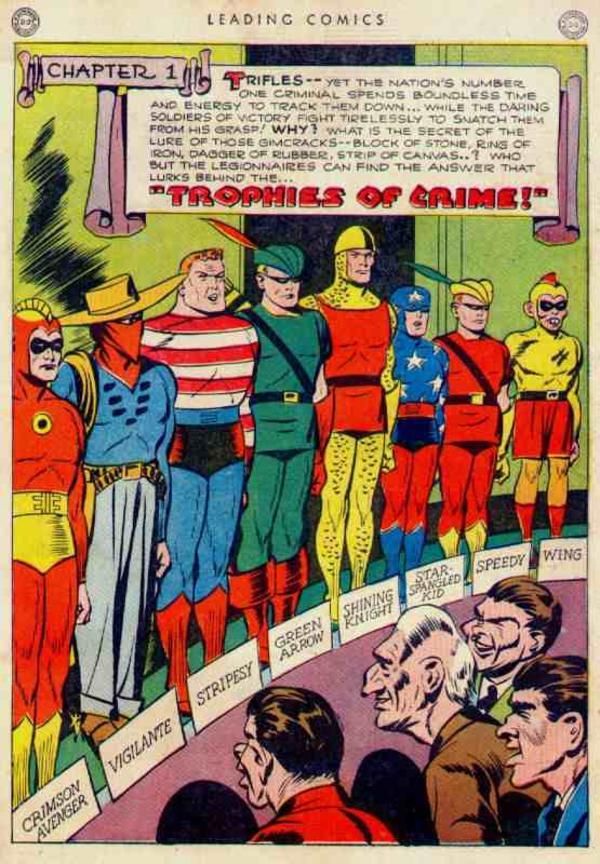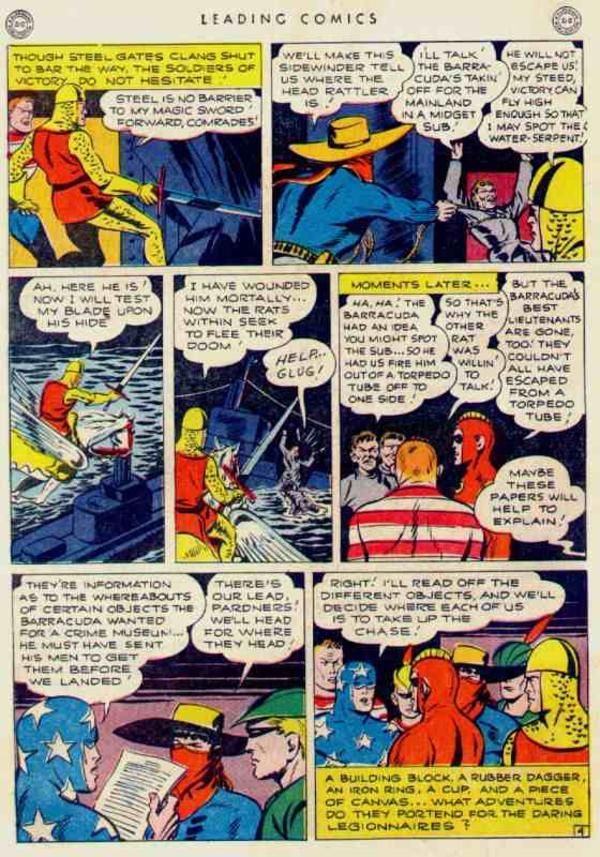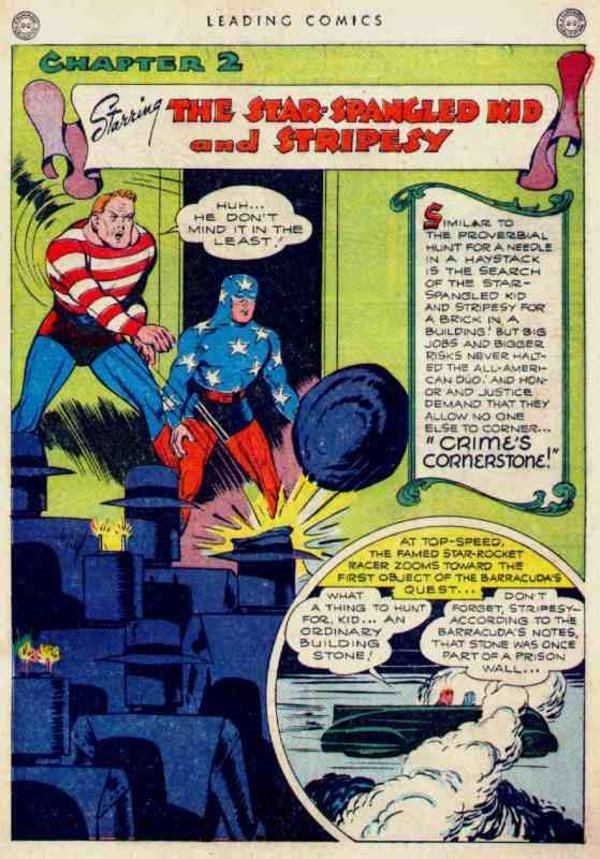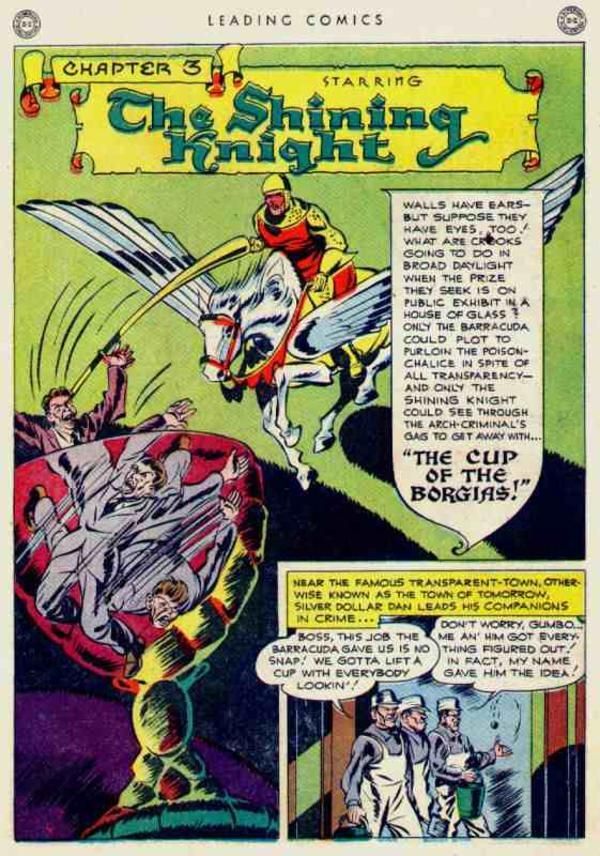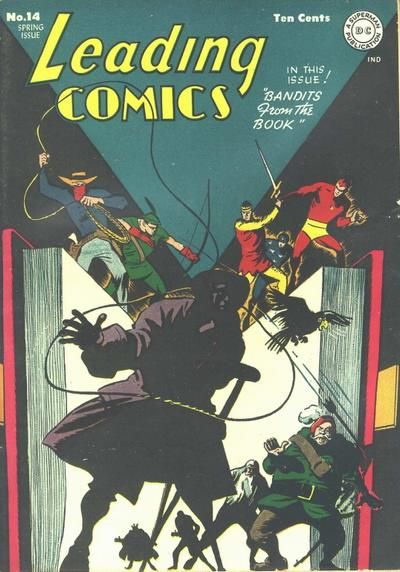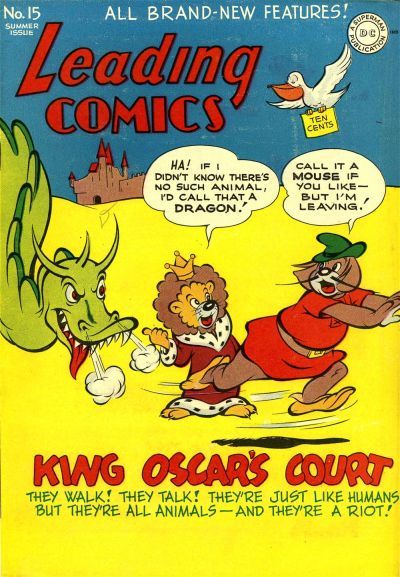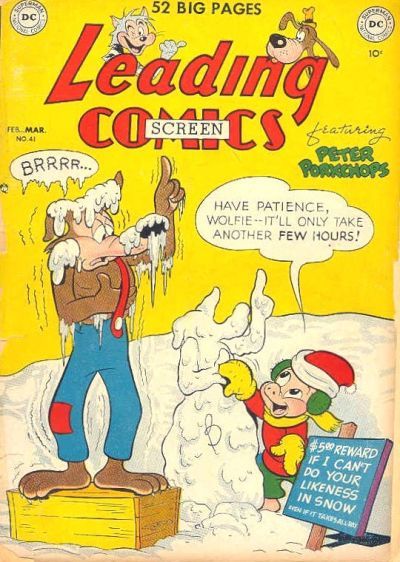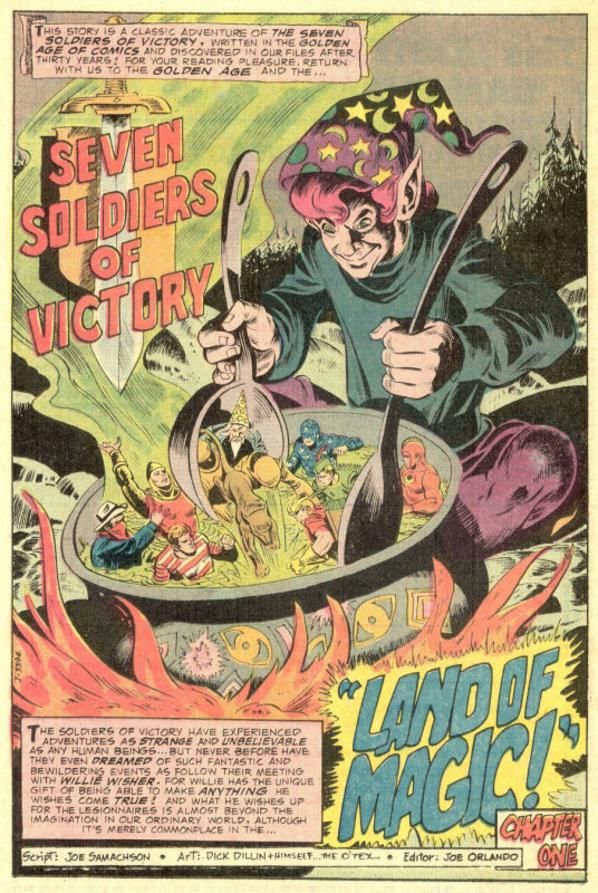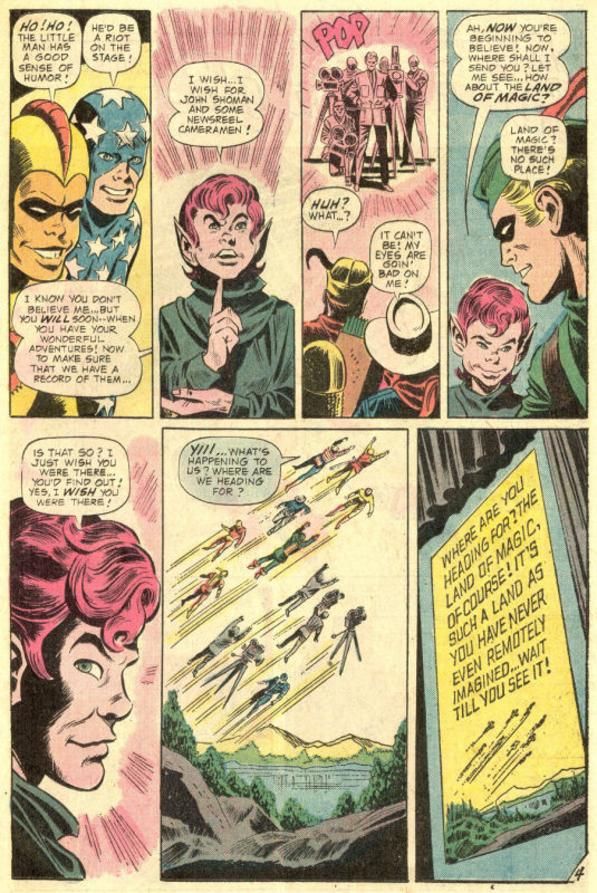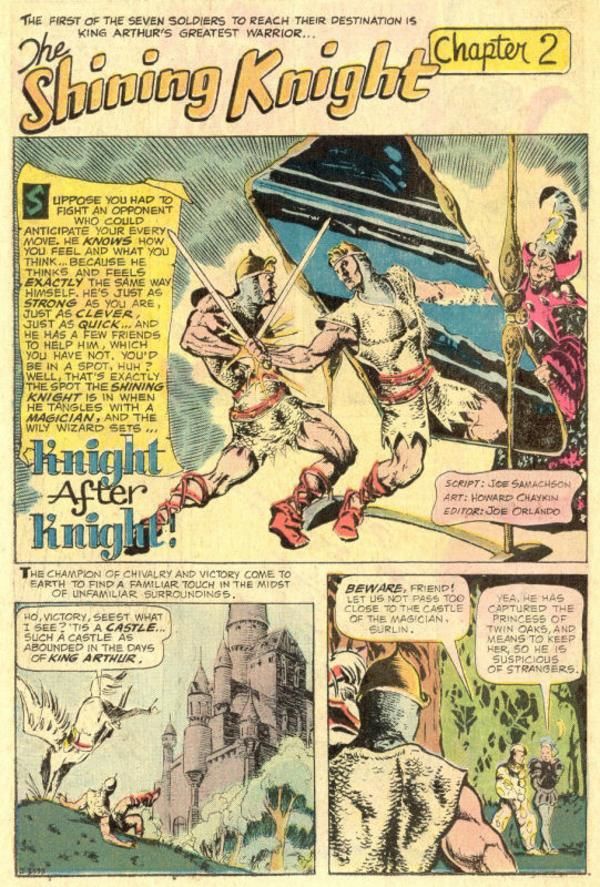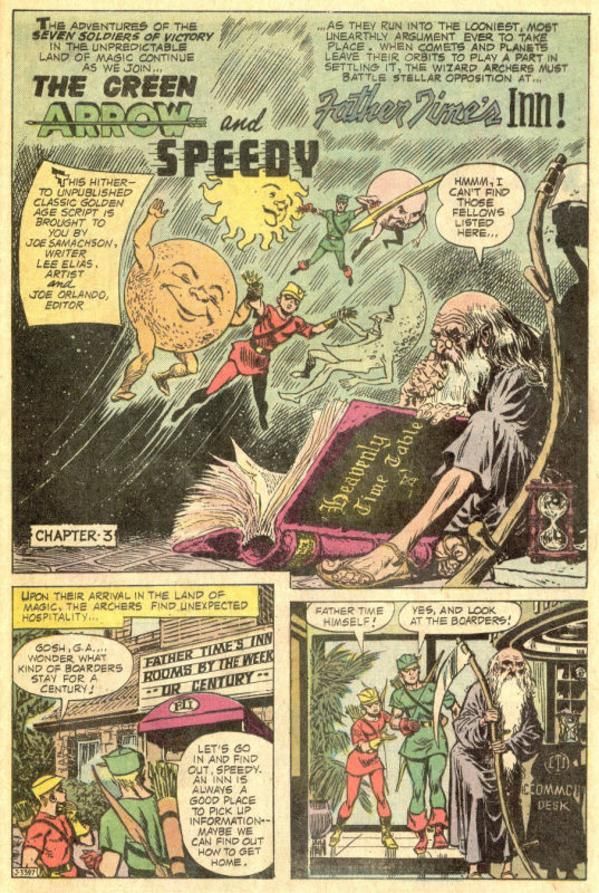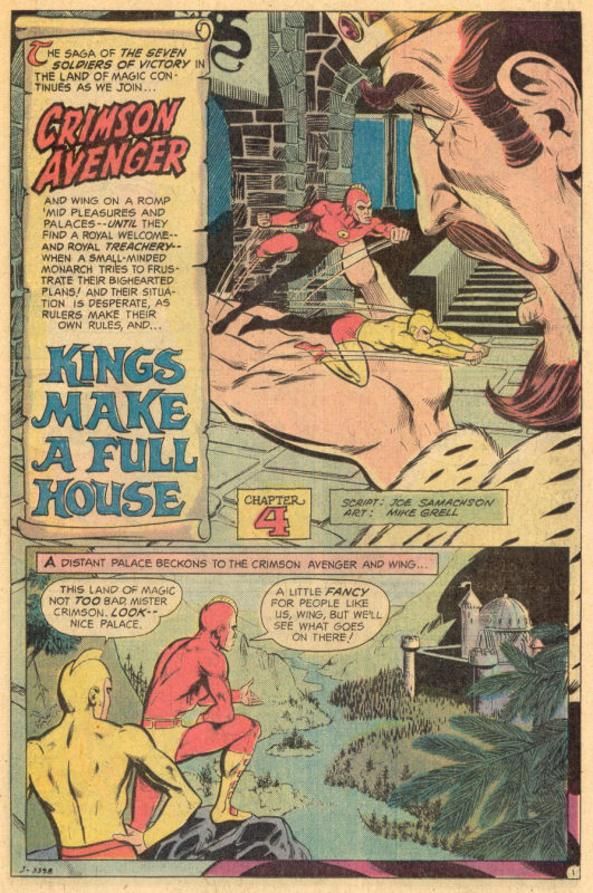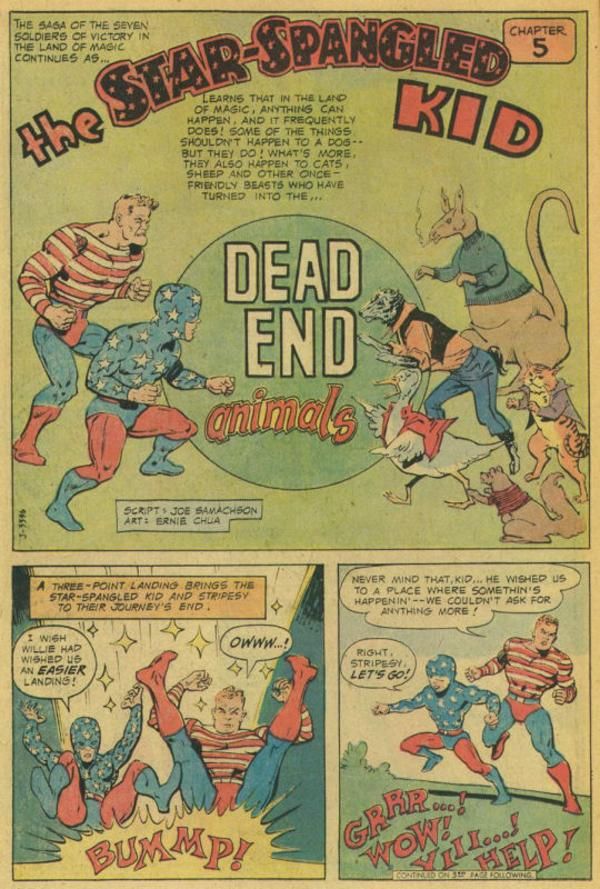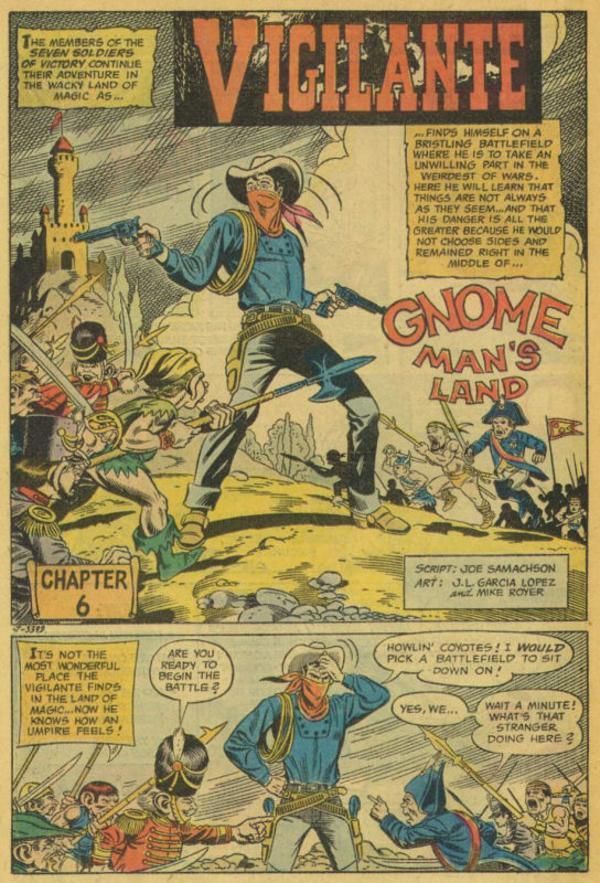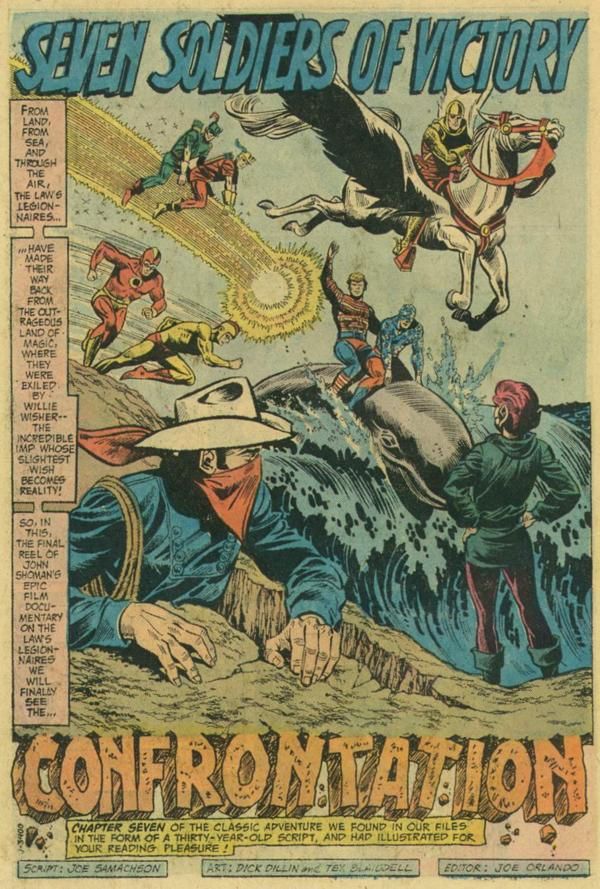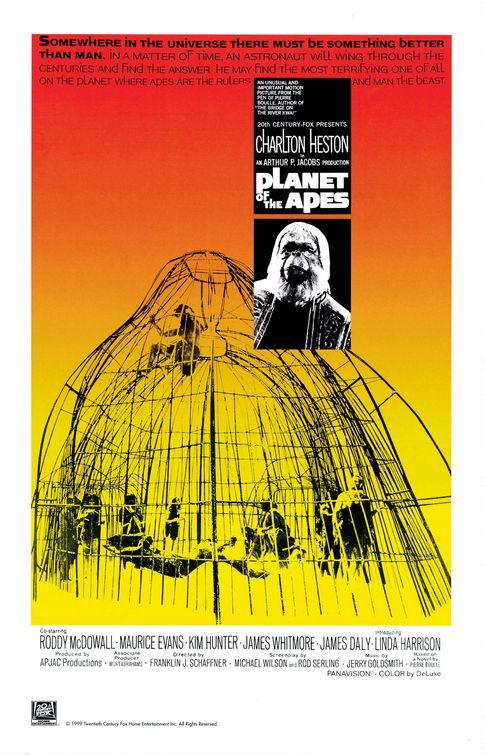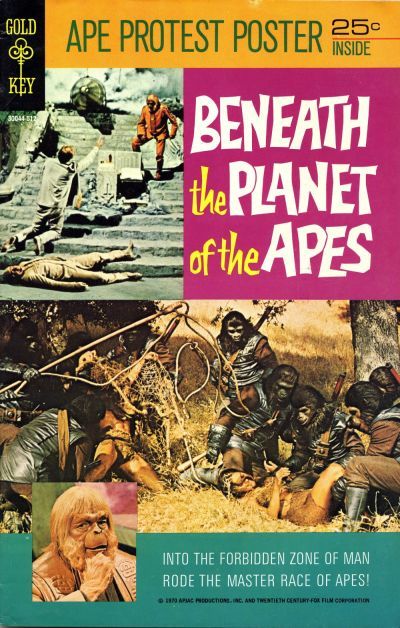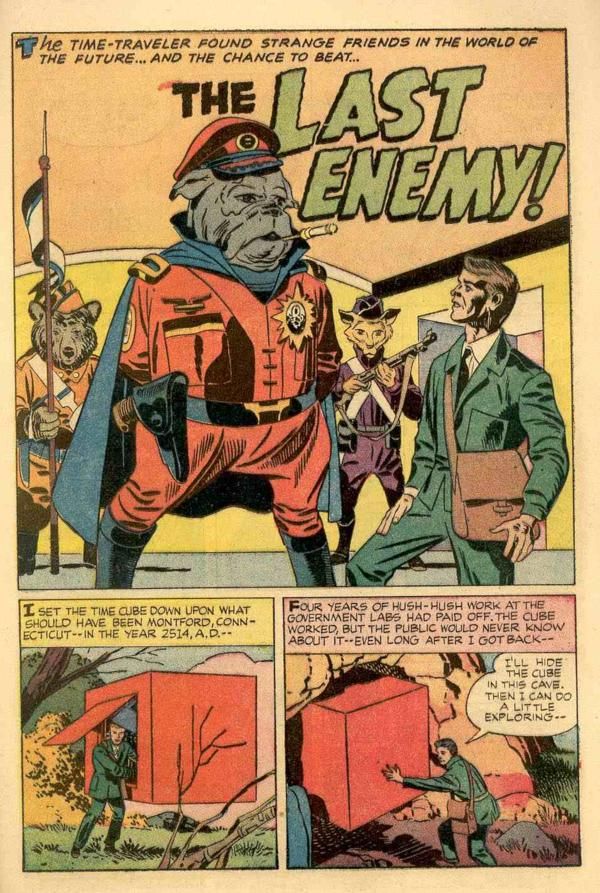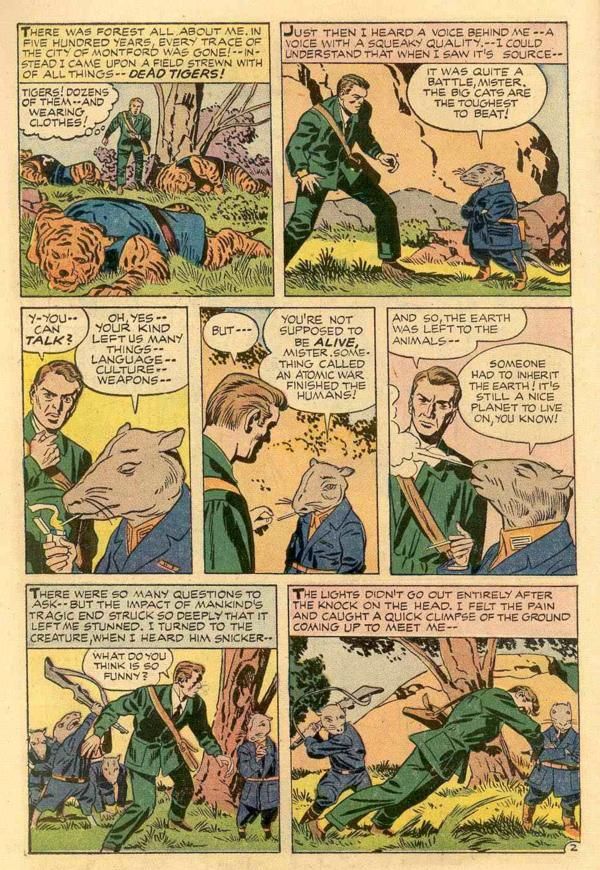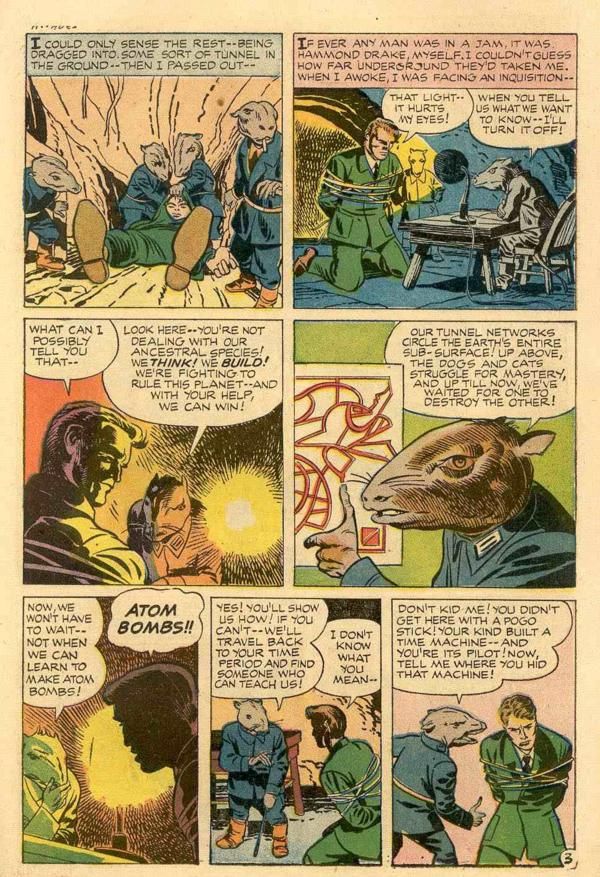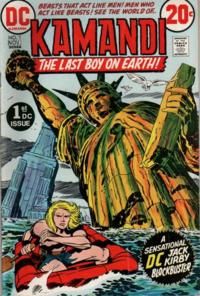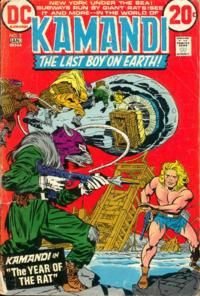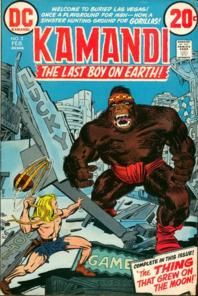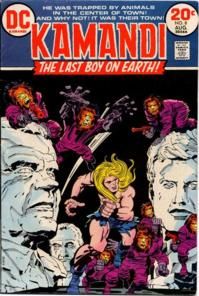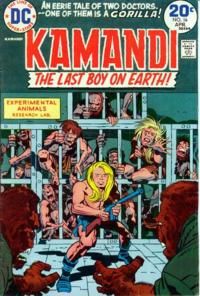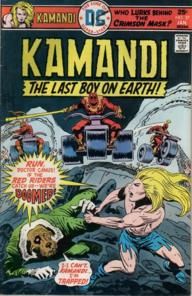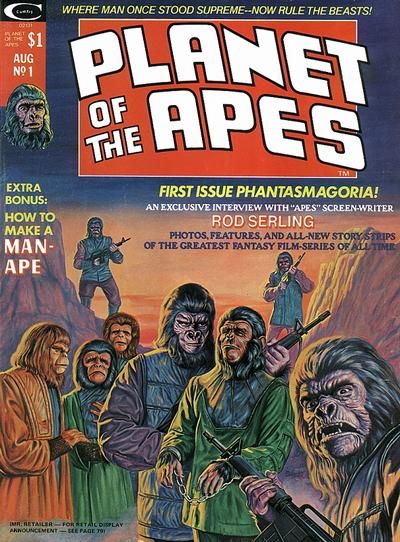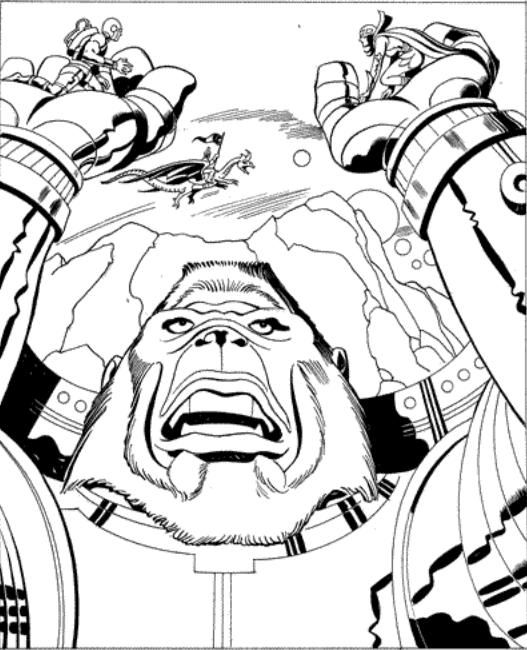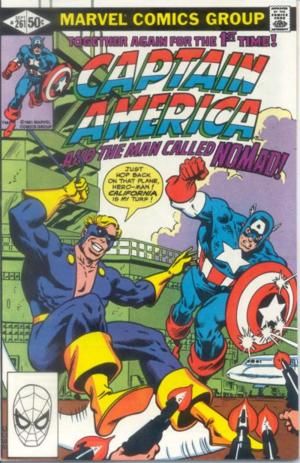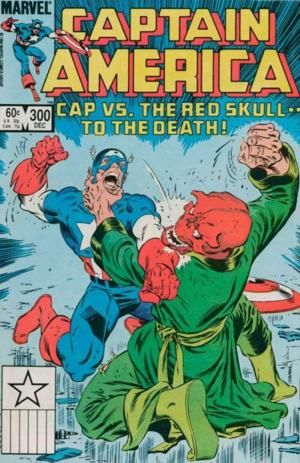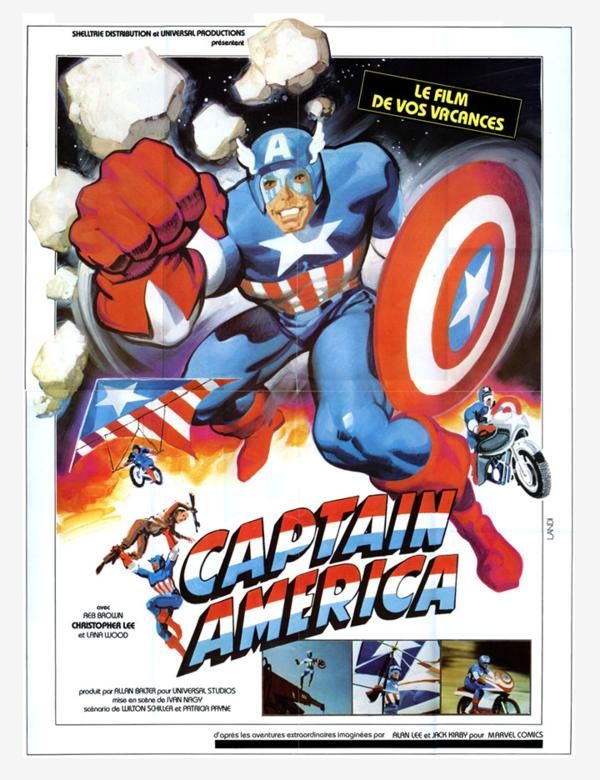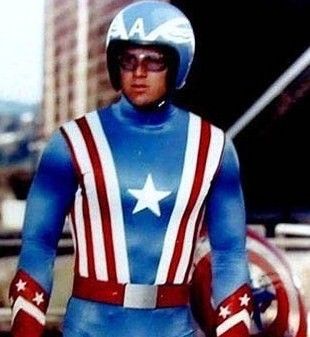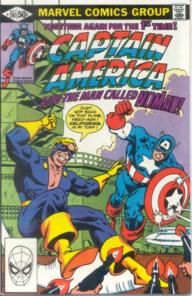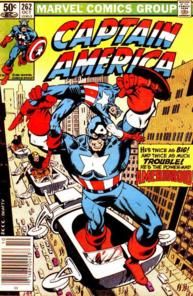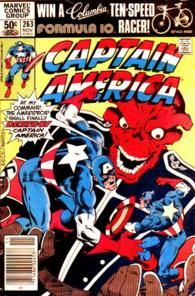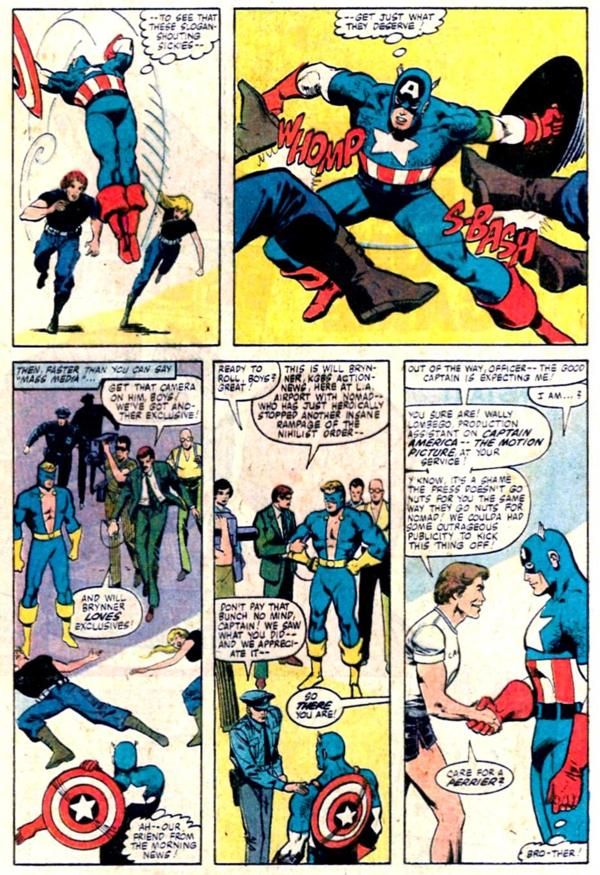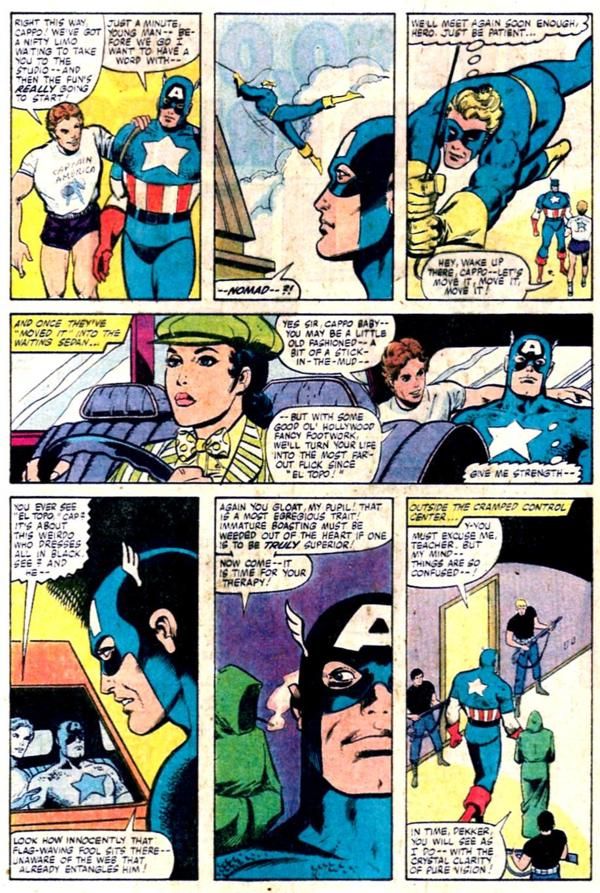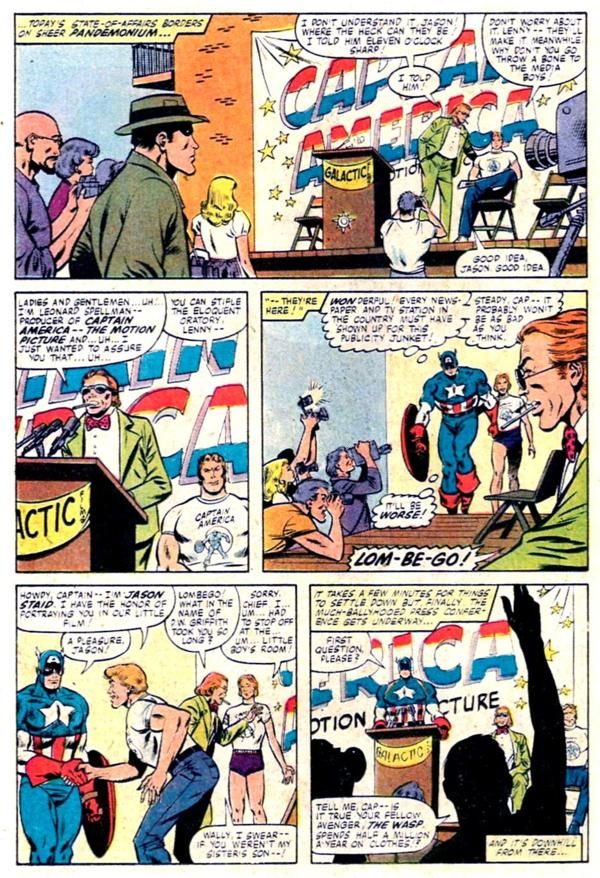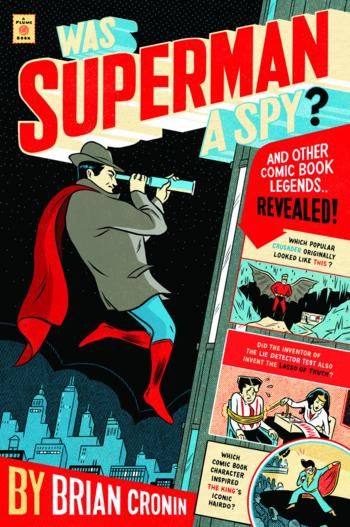Welcome to the two-hundred and forty-eighth in a series of examinations of comic book legends and whether they are true or false. Click here for an archive of the previous two hundred and forty-seven.
Comic Book Legends Revealed is part of the larger Legends Revealed series, where I look into legends about the worlds of entertainment and sports, which you can check out here, at legendsrevealed.com. I'd especially recommend you check out this installment of TV Legends Revealed to find out which odd TV series coined the phrase "Does Not Compute"!
This week's a special theme week - each legend involves re-using unpublished works!
Let's begin!
COMIC LEGEND: An unpublished script starring the Seven Soldiers of Victory was published within five issues of Adventure Comics...THIRTY YEARS after the Seven Soldiers of Victory feature was canceled!
STATUS: True
Leading Comics was a quarterly title by DC Comics that debuted in 1941.
Inspired by the format of All-Star Comics, Leading Comics featured a number of solo heroes all on a newly formed group called the Seven Soldiers of Victory (the heroes were the Star-Spangled Kid and Stripesy, The Crimson Avenger, Green Arrow and Speedy, The Vigilante and the Shining Knight - Crimson Avenger's sidekick didn't count for some reason)
Here they are in #1 forming their new team...
A typical issue of Leading Comics had the Seven Soldiers of Victory get together in Chapter 1 in a framing device, then each individual hero (or heroes, as there were a few duos in the group) would get their own adventure, with each chapter usually drawn by a different artist. For instance, in Leading Comics #1, Mort Meskin drew the framing story and George Papp and Creig Flessel were among the artists who worked on each individual chapter (I bet you can guess which character Flessel drew)
Here's an example from Leading Comics #13 (in this issue, though, Arthur Cazeneuve drew each chapter)...
Each issue was written by Joe Samachson.
Well, Leading Comics was not the most popular book (after all, it was never a monthly book), and in 1945, DC Comics dropped the superheroes from the book with issue #14...
The book then became a funny animal title...
until it was canceled with issue #41...
At the time, though, Samachson already had a script written for #15 that ended up being unused.
Well, it was unused for AWHILE, at least!
THIRTY YEARS later, the great Joe Orlando broke the unused script by Samachson out and the last issue of Leading Comics was finally published over five issues of Adventure Comics, #438-443.
Like the original stories, each chapter was handled by a different artist. This time around, Orlando got some of the best and brightest of DC's 1975 stable of artists.
Dick Dillin did the framing story...
Then Howard Chaykin...
Then Lee Elias...
Then Mike Grell...
Then Ernie Chan...
Then Jose-Luis Garcia-Lopez...
Then back to Dillin to wrap things up...
I don't know if Orlando came up with the idea, but boy what a cool idea it was!
Samachson (who also co-created the Martian Manhunter) died in 1980, so this was a great little final tribute by DC Comics to one of the greats of the Golden Age!
COMIC LEGEND: Jack Kirby's Kamandi began as a DC pitch to do a licensed adaptation of Planet of the Apes.
STATUS: False Enough for a False (but a lot of True involved)
Reader Brett wrote in to ask:
I recently heard that Jack Kirby's Kamandi began as a pitch by DC for a licensed Planet of the Apes comic. Know whether this is true or not?
Well, Brett, that sounds like one of those ever famous "telephone game" situations, where the real story is close ENOUGH to what you just wrote that it is very likely that the story was just told enough times that the details kept getting fuzzier over each telling until it ended up in the version you heard.
The truth is that yes, Kamandi WAS tied in with Planet of the Apes, but in an odder way than you would imagine.
First off, Planet of the Apes came out in 1968 and was a smash hit.
The first comic book adaptation of the Planet of the Apes was actually Gold Key, who did an adaptation to the first sequel to the film, Beneath the Planet of the Apes.
Soon after Carmine Infantino became the publisher of DC Comics, he wanted to acquire the license to make Planet of the Apes comic books, since the film series was very popular (a new sequel came out once a year from 1970-1973).
He was rebuffed in his attempts, so he tasked Jack Kirby with coming up with a comic book that was LIKE Planet of the Apes.
Now Kirby had not actually seen the film, but he knew the basic gist of the story, and surely enough, Kirby had done a story years earlier in 1957 (before the novel, Planet of the Apes, was written, let alone the film adaptation) when he was working for Harvey Comics' Alarming Tales, about a post-apocalyptic future where talking anthropomorphic animals ruled the world.
Here are a few pages from that tale...
So this was definitely something Kirby was comfortable with.
As for the name, Kirby had a comic strip pitch that had not been picked up called Kamandi of the Caves from 1956.
Here are a few of the unpublished Kamandi strips...
So there Kirby had the basic plot for his series as well as the name of his main character.
Later, Infantino would suggest that he came up with the basic concept for Kamandi and Kirby ran with it, but I dunno, that doesn't seem to match up with Kirby's Alarming Tales story as well as the comic strip.
Kirby wrote and drew Kamandi for 37 issues and drew another three.
Lasting for 59 issues, Kamandi was the most successful comic launched during Kirby's 1970s tenure at DC Comics.
Annoyingly enough, though, when Kirby pitched the idea, his intention was that someone else would write and draw it, as he wanted to devote his time to his Fourth World comics. Infantino "helped" Kirby out by canceling Forever People so Kirby could devote his time to Kamandi (Infantino "helped" Kirby out in a similar fashion when he canceled New Gods so that Kirby could launch The Demon).
Much to Infantino's chagrin, I'm sure, Marvel ended up getting the Planet of the Apes license in 1974.
And amusingly, Kirby later made a pitch for a Planet of the Apes animated series that ended up not getting picked up.
So there ya go, Brett - it has a lot of what you heard, but not exactly as you heard it!
Thanks so much to John A. Modica for the Kamandi comic strips (courtesy of the fourth edition of the Collected Jack Kirby Collector - you can buy a copy here) and thanks to Eric Nolan-Weathington for the picture from Kirby's Planet of the Apes animated pitch (courtesy of the Jack Kirby Collector #32, which you can buy a copy of here)!
COMIC LEGEND: J.M. DeMatteis' first three issues of Captain America were adapted from an unpublished tie-in comic to the 1970s Captain America TV movie!
STATUS: True
J.M. DeMatteiis has an acclaimed run on Captain America, working mostly with penciler Mike Zeck, from issue #261 through #300.
However, his first three issues were not actually written to be part of any sort of run!
No, issues #261-263, which came out in the Summer of 1981, were actually part of DeMatteis' very first paid work at Marvel Comics, for a project in 1979!
You see, in 1979, there was a TV movie made starring Reb Brown as Captain America.
Here's a cool poster for the TV movie from French television...
Here's Brown as Cap...
The movie was popular enough that it had a sequel.
In any event, Jim Shooter thought that it would be a good idea for Marvel to do a project tying in with the film, so DeMatteis was hired to write a Treasury Edition comic about the movie - rather than an adaptation, the comic would be about Cap having an adventure with the people from the movie, including meeting Reb Brown.
The project fell by the wayside, but a couple of years later, Captain America Editor Jim Salicrup was looking for some fill-in issues (the book had been all fill-in issues since John Byrne and Roger Stern's run had ended), so he dug out DeMatteis' issues and had DeMatteis re-work them from a Treasury Edition into three regular issues of Cap.
Here are some pages from #261 to give you an idea of what the original plot must have been...
Anyhow, I guess the issues went over well, as DeMatteis was named the regular writer for the title and stayed on the book for three years!
Thanks to Mike Higgins, Jim Salicrup and David Kraft's Comics Interview for their great interview with DeMatteis back in Comics Interview #39 (and, of course, thanks to DeMatteis for the interview!).
Okay, that's it for this week!
Thanks to the Grand Comics Database for this week's covers! And thanks to Brandon Hanvey for the Comic Book Legends Revealed logo!
Feel free (heck, I implore you!) to write in with your suggestions for future installments! My e-mail address is cronb01@aol.com.
As you likely know by now, last April my book finally came out!
Here is the cover by artist Mickey Duzyj. I think he did a very nice job (click to enlarge)...
If you'd like to order it, you can use the following code if you'd like to send me a bit of a referral fee...
Was Superman a Spy?: And Other Comic Book Legends Revealed
See you all next week!

